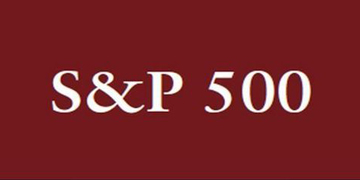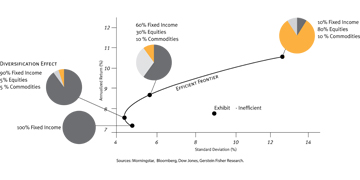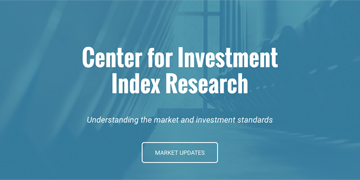According to the Merriam-Webster Dictionary, the word "analysis" is defined as a careful study of something to learn about its parts, what they do, and how they are related to each other; and an explanation of the nature and meaning of something.
Standard & Poors 500 IndexThe Standard & Poors 500 Index has been widely used as the basic benchmark for stock-oriented portfolios. Often considered a surrogate for the overall market, this index is composed of the stocks of 500 of the largest companies listed on U.S. exchanges. The S&P 500 Index is market-cap-weighted, which means that the importance of individual stocks in the index depends upon the stock's market value. Therefore, a percentage change in the market value of a large company has a greater impact than an identical percentage change in a smaller company.
As the most popular single index benchmark, the S&P 500 Index is also used for those portfolios where no other standard benchmark is readily available for comparison, such as domestic-hybrid, international-hybrid, and convertible-bonds. For any fixed income portfolio, the Lehman Brothers (now Barclays) U.S. Aggregate Bond Index is used as the standard benchmark index. This index is a combination of the Government, Corporate, Mortgage-Backed, and Asset-Backed Securities indexes. Note that it contains no high-yield issues. In 2014, S&P Global also created a similar bond index with value started in 2002. The bond index can be used together with the S&P 500 Index to form a simple blended benchmark such as a 60/40 benchmark (60% S&P 500 and 40% bond). Other single market index can also be used as the benchmark for a specific portfolio. |
Portfolio Asset Allocation BenchmarkA Portfolio Asset Allocation Benchmark can be created by a combination of multiple well-selected single market indexes. A set of popular portfolio benchmarks defined below are used to evaluate a portfolio's performance for the given risk tolerance level, ranging from Short-Term (100% cash or 3-Month T-Bill), Conservative, Moderate Conservative, Moderate, Moderately Aggressive, to Aggressive.
|
Theme-Based Benchmark IndexA Theme-Based Benchmark Index is a portfolio of ETFs following a predefined trading rules. Each Theme-Based index creates a customized benchmark that reflects an investor's personal circumstances (a Theme) such that the most relevant comparison can be made for a portfolio as a whole.
Most portfolio managers today recognize that applying a traditional single market index such as the S&P 500 Index often encourages short-term thinking and possibly even too much trading. For those investors already in retirement, they do not even feel they need a irrelevant and misleading blended benchmark which is often applied today, as the main consideration for them are simply having sufficient income. The Institute for Systematic Investment Research (ISIR) has long been dedicated to the development of theme-based portfolio benchmarks. Thanks to the rapid growth of ETF industry, the creation of Theme-Based Benchmark Indexes has recently become a reality. The new Theme-Based Benchmark Indexes created by ISIR include
Note that each of the above Theme-Based Benchmark Indexes is defined and backed up by a real ETF portfolio (to be published) and follows the Global Investment Performance Standards to possess the following properties as a valid benchmark:
|
Other Indexes on Portfolio BenchmarkingA benchmark index gives the investor a point of reference for measuring a portfolio's performance.
Other indexes for measuring portfolio benchmark performance can be found on InvestmentBenchmark.com, the Center for Investment Index and Benchmark Research sponsored by the Institute for Systematic Investment Research (ISIR). If you believe that any other significant market indexes should be included here for portfolio benchmark performance evaluation, please contact us. Your comments and suggestions are most appreciated for the benefits of all investors. |



